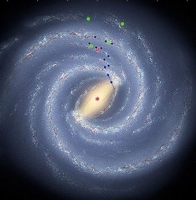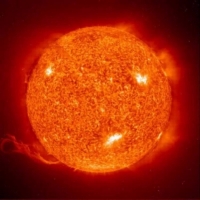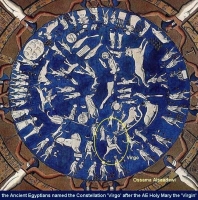| |  天文学 天文学 | | | 研究天体、宇宙的结构和发展的科学,包括天体的构造、性质和运行的规律等。 | 〖学科简介〗 Introduction〗 〖Subject | 天文学是研究宇宙空间天体、宇宙的结构和发展的学科。内容包括天体的构造、性质和运行规律等。主要通过观测天体发射到地球的辐射,发现并测量它们的位置、探索它们的运动规律、研究它们的物理性质、化学组成、内部结构、能量来源及其演化规律。天文学是一门古老的科学,自有人类文明史以来,天文学就有重要的地位。随着人类社会的发展,天文学的研究对象从太阳系发展到整个宇宙。现在天文学按研究方法分类已形成天体测量学、天体力学和天体物理学三大分支学科。按观测手段分类已形成光学天文学、射电天文学和空间天文学几个分支学科。
当您抬头仰望天空时,您知道那些闪闪发光的东西是什么吗?一些是行星,但多数为恒星,还有一些是巨大的星系,每个星系中都有成百上千亿颗恒星。天文学就是研究宇宙中的行星、恒星以及星系的科学。天文学家的任务就是解释我们在夜空中所看到的各种天体,他们还致力于了解其他一些东西,例如,恒星的年龄以及他们与地球之间的距离等等。
“几乎所有的自然科学分支研究的都是地球上的现象,只有天文学从它诞生的那一天起就和我们头顶上可望而不可及的灿烂的星空联系在一起。天文学家观测从行星、恒星、星系等各种天体来的辐射,小到星际的分子,大到整个宇宙。天文学家测量它们的位置,计算它们的轨道,研究它们的诞生,演化和死亡,探讨它们的能源机制。天文学和物理学、数学、地理学、生物学等一样,是一门基础学科。
牛顿力学的出现,核能的发现等对人类文明起重要作用的事件都和天文研究有密切的联系。当前,对高能天体物理、致密星和宇宙演化的研究,能极大地推动现代科学的发展。对太阳和太阳系天体包括地球和人造卫星的研究在航天、测地、通讯导航等部门中有许多应用。”(南京大学天文系黄天衣教授)
天文起源于古代人类时令的获得和占卜活动。是以观察及解释天体的物质状况及事件为主的学科。主要研究天体的分布、运动、位置、状态、结构、组成、性质及起源和演化。在古代,天文学还与历法的制定有不可分割的关系。天文学与其他自然科学不同之处在于,天文学的实验方法是观测,通过观测来收集天体的各种信息。因而对观测方法和观测手段的研究,是天文学家努力研究的一个方向。
同时天文学是简洁,优美的,令人陶醉的!不少人认为天文学离现实生活很远,其实这也对,但说的不够严谨!天文学不仅是一门自然科学,而且还是一门自然哲学,吸引无数人研究!总的来说,天文学是一门古老而又年轻的科学!天文学的发展历程象征着人类文明的成果与辉煌! | | | 自古以来,人类一直对恒星和行星十分感兴趣。古代的天文学家仅仅依靠肉眼观察天空,1608年,人们发明了望远镜,此后,天文学家就能够更清楚的观察恒星和行星了。意大利科学家伽利略,就是最早使用望远镜研究太空的人之一。今天天文学家使用许多不同类型的望远镜来收集宇宙的信息。有些望远镜可以收集到来自遥远天体的微弱亮光,如X射线。绝大多数望远镜是安放在地球上的,但也有些望远镜被放置在太空中,沿着轨道运转,如哈勃太空望远镜。现在,天文学家还能够通过发射的航天探测器来了解某些太空信息。 | | 古代的天文学家通过观测太阳、月球和其他一些天体及天象,确定了时间、方向和历法。这也是天体测量学的开端。如果从人类观测天体,记录天象算起,天文学的历史至少已经有5、6千年了。天文学在人类早期的文明史中,占有非常重要的地位。埃及的金字塔、欧洲的巨石阵都是很著名的史前天文遗址。
天文学的研究范畴和天文的概念从古至今不断发展。在古代,人们只能用肉眼观测天体。2世纪时,古希腊天文学家托勒密提出的地心说统治了西方对宇宙的认识长达1000多年。直到16世纪,波兰天文学家哥白尼才提出了新的宇宙体系的理论——日心说。到了1610年,意大利天文学家伽利略独立制造折射望远镜,首次以望远镜看到了太阳黑子、月球表面和一些行星的表面和盈亏。在同时代,牛顿创立牛顿力学使天文学出现了一个新的分支学科天体力学。天体力学诞生使天文学从单纯描述天体的几何关系和运动状况进入到研究天体之间的相互作用和造成天体运动的原因的新阶段,在天文学的发展历史上,是一次巨大的飞跃。
19世纪中叶天体摄影和分光技术的发明,使天文学家可以进一步深入地研究天体的物理性质、化学组成、运动状态和演化规律,从而更加深入到问题本质,从而也产生了一门新的分支学科天体物理学。这又是天文学的一次重大飞跃。
20世纪50年代,射电望远镜开始应用。到了20世纪60年代,取得了称为“天文学四大发现”的成就:微波背景辐射、脉冲星、类星体和星际有机分子。而与此同时,人类也突破了地球束缚,可到天空中观测天体。除可见光外,天体的紫外线、红外线、无线电波、X射线、γ射线等都能观测到了。这些使得空间天文学得到巨大发展,也对现代天文学成就产生很大影响。 | 〖研究对象和领域〗 〗 〖Subjects and areas |  天文学 〖研究对象和领域〗 天文学 〖研究对象和领域〗
随着天文学的发展,人类的探测范围到达了距地球约100亿光年的距离,根据尺度和规模,天文学的研究对象可以分为:
行星层次 :
包括行星系中的行星、围绕行星旋转的卫星和大量的小天体,如小行星、彗星、流星体以及行星际物质等。太阳系是目前能够直接观测的唯一的行星系。但是宇宙中存在着无数像太阳系这样的行星系统。
恒星层次 :
现在人们已经观测到了亿万个恒星,太阳只是无数恒星中很普通的一颗。
星系层次 :
人类所处的太阳系只是处于由无数恒星组成的银河系中的一隅。而银河系也只是一个普通的星系,除了银河系以外,还存在着许多的河外星系。星系又进一步组成了更大的天体系统,星系群、星系团和超星系团。
整个宇宙 :
一些天文学家提出了比超星系团还高一级的总星系。按照现在的理解,总星系就是目前人类所能观测到的宇宙的范围,半径超过了100亿光年。
在天文学研究中最热门、也是最难令人信服的课题之一就是关于宇宙起源与未来的研究。对于宇宙起源问题的理论层出不穷,其中最具代表性,影响最大,也是最多人支持的的就是1948年美国科学家伽莫夫等人提出的大爆炸理论。根据现在不断完善的这个理论,宇宙是在约137亿年前的一次猛烈的爆发中诞生的。然后宇宙不断地膨胀,温度不断地降低,产生各种基本粒子。随着宇宙温度进一步下降,物质由于引力作用开始塌缩,逐级成团。在宇宙年龄约10年时星系开始形成,并逐渐演化为今天的样子。 | 〖天文学的研究方法与手段〗 Astronomy 〖〗 research methods and tools | 天文学研究的对象有极大的尺度,极长的时间,极端的物理特性,因而地面试验室很难模拟。因此天文学的研究方法主要依靠观测。由于地球大气对紫外辐射、X射线和γ射线不透明,因此许多太空探测方法和手段相继出现,例如气球、火箭、人造卫星和航天器等。
天文学的理论常常由于观测信息的不足,天文学家经常会提出许多假说来解释一些天文现象。然后再根据新的观测结果,对原来的理论进行修改或者用新的理论来代替。这也是天文学不同于其他许多自然科学的地方。 | 〖天文学与占星术〗 〗 〖Astronomy and astrology | | 天文学应当和占星术分开。后者是一种试图通过天体运行状态来预测一个人命运的伪科学。尽管两者的起源相似,在古代常常混杂在一起。但当代的天文学与占星术却有着明显的不同:现代天文学是使用科学方法,以天体为研究对象的学科;而占星术则通过比附,联想等方法把天体位置和人事对应;概而言之,占星学着眼于预测人的命运。 | | | 天文学已进入一个崭新的阶段。多年来,天文观测手段已从传统的光学观测扩展到了从射电、红外、紫外到X射线和γ射线的全部电磁波段 。这导致一大批新天体和新天象的发现,例如,类星体、活动星系、脉冲星、微波背景辐射、星际分子 、X射线双星 、γ射线源等等,使得天文研究空前繁荣和活跃 。口径2米 级的空间望远镜已经进入轨道开始工作。一批口径10米级的光学望远镜将建成。射电方面的甚长基线干涉阵和空间甚长基线干涉仪,红外方面的空间外望远镜设施,X射线方面的高级X射线天文设施等不久都将问世。γ射线天文台已经投入工作。这些仪器的威力巨大,远远超过现有的天文设备。可以预料,这些天文仪器的投入使用必将使天文学注入新的生命力,使人们对宇宙的认识提高到一个新的水平,天文学正处在大飞跃的前夜。 | 〖古代埃及与天文学〗 〗 〖And astronomy of ancient Egypt |  〖古代埃及与天文学〗 〖古代埃及与天文学〗
埃及人把昼和夜各分成12个部分,每个部分为日出到日落或日落到日出的时间的1/12。埃及人用石碗滴漏计算时间,石碗底部有个小口,水滴以固定的比率从碗中漏出。石碗标有各种记号用以标志各种不同季节的小时。 别怀疑,古埃及的占星学可是很发达的。正如古埃及文明的特色一般,他们的十二星座也是以古埃及的神来代表的。
古埃及人关于星的研究与知识累积起源于远古时代农业生产的需要。古埃及的农业生产,由于
播种季节和田野.果园的丰收.都要依赖于尼罗河的每年泛滥,而尼罗河的泛滥,又和星体运动有关,特别是每隔1460年便会出现日出、天狼升空与尼罗河泛滥同时发生的现象。所以,僧侣从很早便开始制作天体图.埃及的天文学与数学一样,仍然处于一种低水平的发展阶段,而且还落后于巴比伦。在古埃及的文献中,既没有数理仪器的记述,也没有日食、月食或其他天体现象的任何观察的记录。埃及人曾把行星看成漫游体,并且把有命名的称为星和星座(它很少能与现代的等同起来)所以,他们仅有的创作能够夸大为"天文学"的名字.从古王国时代一直到较晚的托勒密时代保存下来的某些铭文包括了天空划分的名单。被希腊人称为"德坎"(黄道十度分度)的是用图描绘的所谓夜间的12小时。人们使用德坎划分年份,一年由36个为期10天的连续星期构成。36个德坎共计360天,构成一年的时间。但是,还缺少5天,因此,每隔若干年,每星期德坎出现的时间就必须往后移。埃及人的宇宙观念往往是用不同的神话来解释,并且保留了一些不同的天体的绘画。在新王国时代陵墓中的画面上,我们看到天牛形象的天空女神努特,她的身体弯曲在大地之上形成了一个天宫的穹隆,其腹部为天空,并饰以所谓"星带"。沿星带的前后有两只太阳舟,其中头上一只载有太阳神拉,他每日乘日舟和暮舟巡行于天上。大气之神舒立在牛腹之下,并举起双手支撑牛腹,即天空。天牛的四肢各有2神所扶持。按另一种神话传说,天空女神努特和大地之神盖伯两者相拥合在一起,其父大气之神舒用双手把女神支撑起来,使之与盖伯分离,仅仅让努特女神之脚和手指与地面接触,而盖伯半躺在大地上。这些神话传说反映了埃及人关于天、地、星辰的模糊的概念.埃及的某些僧侣被指定为"时间的记录员".他们每日监视夜间的星体运动,他们需要记录固定的星的次序,月亮和行星的运动.月亮和太阳的升起.没落时间和各种天体的轨道。这些人还把上述资料加以整理,提出天体上发生的变化及其活动的报告。在拉美西斯六世、七世和九世的墓中保存了星体划分的不同时间的图,它由24个表构成,一个表用作每半个月的间隔。与每个表一起,有一个星座图的说明.在第18王朝海特西朴苏特统治时的塞奈穆特墓中的天文图,可以说是迄今所知的最早的天文图。神庙天文学家所知道的一组星为"伊凯姆·塞库",即"从不消失的星".显然是北极星。第二组为"伊凯姆·威列杜".即"从未停顿的星".实际上是行星。埃及人是否知道行星与星之间的区别,尚未报道。他们所知道的星是天狼星.猎户座.大熊座.天鹅座.仙后座.天龙座.天蝎座.白羊宫等。他们注意到的行星有木星,土星,火星,金星等。当然,他们的星体知识并不精确,星与星座之间很少能与现代的认识等同起来.太阳的崇拜,在埃及占有重要地位。从前王朝时代起.太阳被描绘为圣甲虫,在埃及宗教中占有显著的地位。而且,不同时辰的太阳还有不同的名称,在不同地区,不同时代,还有另外一些太阳神.埃及人的民用历法,一年分为12个月.每月30日.一年360日,后来又增加了5日,以365日为一年。但是,实际上,这种历法并不精确.因为.1个天文年是365.25日,所以,埃及民用历每隔4年便比天文历落后1天。然而.在古代世界,这就是最佳的历法。罗马的儒略历就是儒略·恺撒(J·Caesar)采用古埃及的太阳历加闰年而成的.中世纪罗马教皇格列高利(Gregory) 对儒略历加以改革,成为今日公认的世界性公历。在这一方面,同样可以看到古埃及人的重大贡献。 | 〖古典天文学的高峰:希腊化时代天文学〗 〖Classical astronomy peak: the era of Greek astronomy〗 | 希腊化时代天文学的水平,直到近代初期之后很久才“重新”达到。在讲四大天文学家(有的身兼地理学家)之前,先介绍些背景。
在希腊化时代之初(前4世纪),发生了古代版的“地理大发现”。毕特阿斯绕过不列颠诸岛驶向北冰洋边缘;汉诺航行到了非洲西岸;亚历山大进军印度,并派考察队去调查里海究竟是湖还是海。随着视野的扩大和知识的增进,地球是一个球体已成为科学界共识,埃克潘达斯(Ecphantus)观察到昼夜长短随纬度不同,进而提出地球在宇宙中央绕地轴自转。自然地,测定地球大小就成了下一步议题。
四大天文学家中的第一个阿里斯塔克(前310年-前230年)就是这方面的先驱之一。在他的《论太阳和月球的大小和距离》一书中,他利用前人阿纳克萨哥拉对月相的解释,巧妙地用几何学原理来解决这个问题。当时尚未建立三角学,但他通过几何推理仍得出了完全正确的方法。但由于测量角度的仪器不够精确,月球呈现半圆的时刻也无法准确判定,造成误差较大。他计算出日地距离是月地距离的18-20倍(正确值是400倍),进而推出太阳直径约为月球直径的20倍。随后,他又利用月食现象比较了地球和月球的大小,得出直径比例为2 : 1(应为4 : 1)。虽然他的计算误差很大,但三者的大小顺序却是正确的,而且由此得到一个重要结论:太阳的直径远大于地球(至少是7倍)。这对当时人的观念是很大的冲击。
据阿基米德的记载,阿里斯塔克因而明确提出了日心说:“恒星与太阳是不动的,地球沿着一个圆周的周边绕太阳运动,太阳则在轨道的中心”。而面对地球运动时何以观察不到恒星运动的质疑,他也正确地指出,这是由于恒星与地球的距离,同地球的轨道直径比起来极其巨大的缘故。
阿里斯塔克的日心说是走在时代前面太远了,以至于连阿基米德都反对,只有等哥白尼来重新提出。当时普遍流行的学说仍是越来越完善的地心说体系。而更精确地测定地球大小和日地距离的是埃拉托色尼(Eratoshtenes,前273年-前192年)。
埃拉托色尼不但是四大天文学家之一,还长期担任亚历山大里亚图书馆馆长,且多才多艺,同时也是“地理学之父”。晚年由于双目失明不能阅读,绝食自尽。
他认为地球是回转椭圆体,通过估算近似处于同一子午线上的两个地方的纬度和距离,测算地球的球面大圆周长(赤道长度)。他的计算中有三个主要误差,幸运的是差不多正好抵消,因此他的计算结果(25.2 万Stade,约合 3.9万公里)很接近正确值(4万公里)。他测算出的日地距离 - 1.495亿公里 - 也和现代数值惊人的接近。
埃拉托色尼在地理学上也有开创性的贡献。他观察到大西洋与印度洋潮汐相似,因此推论两者相通,认为亚非欧三洲是一个巨大岛屿,可以绕过非洲南端航行到印度;并认为大西洋对岸有一块南北向的陆地,启发了后人去寻找新大陆;他的这一观点为波塞冬尼乌斯(Posidonius)所反对,后者又低估了地球的大小,说只需向西航行7000 Stade就能到达印度 - 正是这个错误结论鼓励了哥伦布的远航。
最后两位、也更重要的天文学家-数学家-地理学家,是喜帕恰斯(Hipparchus)和托勒密。他们分别是(平面和球面)三角学的创立者和发展者。喜帕恰斯发明了一种普遍方法,来解答一切将几何中的两类不同量度 - 长度和角度联系起来的问题,这就是三角学。他并且提出了弧度的概念,制作了第一张弧表,进而研究了球面三角(球面三角形的三角之和不等于π),并指出了如何测量地球上各点的经纬度来确定其位置。而托勒密改进了三角学,并强调要把工作建立在“算术和几何学的无可争论的方法”之上;他进一步坚持,在测绘地图时必须先正确测量经纬度。虽然这样的确可以将地理学置于牢固的基础之上,但当时的科学设备尚不足以精确测定经度。尽管如此,他仍结合商人和探险家带来的资料绘制出了很有启发价值的地图:东至马来半岛,西至直布罗陀和不列颠,南至尼罗河上游某湖泊,北至斯堪的纳维亚和俄罗斯草原的广大地区。
喜帕恰斯在公元前160年至前127年之间,先后在罗德岛和亚历山大里亚工作,人称天文学之父(至此自然科学各学科的开创者差不多都出场了)。他在罗德岛上建立了天文台,按巴比伦的方式将天文仪器上的圆周分为360°,并发明了许多天文仪器,他对角度的测量精度已经达到惊人的1/150°。
因此,他所测出的黄赤交角比埃拉托色尼更精确;他确定的回归年长度误差小于6分钟;他发现了岁差(天极与恒星间相对位置的缓慢变动,由地球自转轴方向的转动引起,每过2.58万年转动一周)并测得其大小为每年36秒(现代测定值50秒左右);测得月地距离为地球直径的33又2/3倍,月球直径为地球的1/3。他还绘制了包含1080个恒星及其相对位置的星表,并在这个过程中发现了新恒星,从而打破了亚里士多德“天空不变”的说法。
喜帕恰斯是欧多克索(大家可能还记得,他还是穷竭法的创立者)开创的地心说体系的完善者,正是他使之成为严格的科学理论(是的,虽然这个理论已经过时,但在当时的确是天文学的一大进步)。他假定地球是中心,让日月行星等天体在一个叫做“本轮”的轨道上运动,而本轮又在大得多的圆轨道“均轮”上绕地运行,这样就可以解释这些天体的视运动。均轮和本轮的位置大小都通过观察确定,然后做成数表,可据以预测未来任何时候的天体位置,准确地预报日月食。这个理论可以成功地解释天文现象达几百年之久。
而托勒密(127年-151年,不是托勒密王朝的那个托勒密)进一步发展了喜帕恰斯的理论,写成《天文学大全》一书(阿拉伯人称之为《至大论》以表达他们的崇敬),是天文学的百科全书,直到开普勒的时代都是标准论著,有点类似于《几何原本》、《圆锥曲线论》在数学中的地位。其中加入了一些观察到的新现象,如月球运行的二均差。后人多把地心说直接归于托勒密,这是不太妥当的;他还是科研工作中“剃刀原理”的最早提出者:在解释现象时,采用能把各种事实统一起来的最简单假说,便是正路。而这个原理恰恰是后世反驳地心说的利器。最后,托勒密在光学方面可能还是折射定律的发现者,虽然他的表述仅在小角度下成立。 | | 天文学是研究天体、宇宙的结构和发展的自然科学,内容包括天体的构造、性质和运行规律等。
人类生在天地之间,从很早的年代就在探索宇宙的奥秘,因此天文学是一门最古老的科学,它一开始就同人类的劳动和生存密切相关。它同数学、物理、化学、生物、地学同为六大基础学科。
天文学的研究对于我们的生活有很大的实际意义,如授时、编制历法、测定方位等。天文学的发展对于人类的自然观有很大的影响。哥白尼的日心说曾经使自然科学从神学中解放出来;康德和拉普拉斯关于太阳系起源的星云说,在十八世纪形而上学的自然观上打开了第一个缺口。
天文学的一个重大课题是各类天体的起源和演化。天文学的主要研究方法是观测,不断的创造和改良观测手段,也就成了天文学家们不懈努力的一个课题。天文学和其他学科一样,都随时同许多邻近科学互相借鉴,互相渗透。天文观测手段的每一次发展,又都给应用科学带来了有益的东西。
天文学循着观测-理论-观测的发展途径,不断把人的视野伸展到宇宙的新的深处。 | 〖全天88个星座表〗 88-day constellation table 〖〗 | 编号 中文名称 英文名称 面积(平方度) 位置 观看季节 1-2-3-4等星的数目
1 仙女座 Andromeda 722 北面 秋季 0-3-1-11
2 唧筒座 Antlia 239 南面 春季 0-0-0-1
3 天燕座* Apus 206 南面 0-0-0-3
4 宝瓶座 Aquarius 980 天赤附近 秋季 0-0-2-13
5 天鹰座 Aquila 652 天赤附近 夏季 1-0-4-6
6 天坛座 Ara 237 南面 夏季 0-0-3-5
7 白羊座 Aries 441 天赤附近 秋季 0-1-1-2
8 御夫座 Auriga 657 北面 冬季 1-1-4-4
9 牧夫座 Bootes 907 天赤附近 春季 1-0-3-10
10 雕具座 Caelum 125 南面 冬季 0-0-0-0
11 鹿豹座 Camelopardalis 757 北面 冬季 0-0-0-4
12 巨蟹座 Cancer 506 天赤附近 冬季 0-0-0-6
13 猎犬座 Canes Venatici 465 北面 春季 0-0-1-1
14 大犬座 Canis Major 380 天赤附近 冬季 1-4-2-11
15 小犬座 Canis Minor 183 天赤附近 冬季 1-0-1-0
16 摩羯座 Capricornus 414 天赤附近 秋季 0-0-2-7
17 船底座 Carina 494 南面 冬季 1-3-3-18
18 仙后座 Cassiopeia 598 北面 秋季 0-3-2-5
19 半人马座 Centaurus 1060 南面 春季 2-2-8-21
20 仙王座 Cepheus 588 北面 秋季 0-0-3-10
21 鲸鱼座 Cetus 1231 天赤附近 秋季 0-2-1-11
22 蝘蜓座* Chamaeleon 132 南面 0-0-0-4
23 圆规座 Circinus 93 南面 春季 0-0-1-1
24 天鸽座 Columba 270 南面 冬季 0-0-2-4
25 后发座 Coma Berenices 386 天赤附近 春季 0-0-0-2
26 南冕座 Corona Australis 128 南面 夏季 0-0-0-4
27 北冕座 Corona Borealis 179 天赤附近 夏季 0-1-0-4
28 乌鸦座 Corvus 184 天赤附近 春季 0-0-4-2
29 巨爵座 Crater 282 天赤附近 春季 0-0-0-3
30 南十字座 Crux 68 南面 春季 1-2-1-5
31 天鹅座 Cygnus 804 北面 夏季 1-1-4-18
32 海豚座 Delphinus 189 天赤附近 夏季 0-0-0-4
33 剑鱼座 Dorado 179 南面 冬季 0-0-1-2
34 天龙座 Draco 1083 北面 夏季 0-1-5-9
35 小马座 Equuleus 72 天赤附近 秋季 0-0-0-1
36 波江座 Eridanus 1138 天赤附近 冬季 1-0-3-24
37 天炉座 Fornax 398 天赤附近 秋季 0-0-0-1
38 双子座 Gemini 514 天赤附近 冬季 1-2-4-12
39 天鹤座 Grus 366 南面 秋季 0-2-1-6
40 武仙座 Hercules 1225 天赤附近 夏季 0-0-6-19
41 时钟座 Horologium 249 南面 冬季 0-0-0-2
42 长蛇座 Hydra 1303 天赤附近 春季 0-1-5-13
43 水蛇座* Hydrus 243 南面 秋季 0-0-3-2
44 印第安座 Indus 294 南面 秋季 0-0-1-2
45 蝎虎座 Lacerta 201 北面 秋季 0-0-0-2
46 狮子座 Leo 947 天赤附近 春季 1-2-3-12
47 小狮座 Leo Minor 232 天赤附近 春季 0-0-0-3
48 天兔座 Lepus 290 天赤附近 冬季 0-0-4-6
49 天秤座 Libra 538 天赤附近 夏季 0-0-3-4
50 豺狼座 Lupus 334 南面 夏季 0-0-4-16
51 天猫座 Lynx 545 北面 冬季 0-0-1-5
52 天琴座 Lyra 286 北面 夏季 1-0-2-6
53 山案座* Mensa 153 南面 0-0-0-0
54 显微镜座 Microscopium 210 南面 秋季 0-0-0-0
55 麒麟座 Monoceros 482 天赤附近 冬季 0-0-3-6
56 苍蝇座* Musca 138 南面 0-0-2-4
57 矩尺座 Norma 165 南面 夏季 0-0-0-1
58 南极座* Octans 291 南面 0-0-0-3
59 蛇夫座 Ophiuchus 948 天赤附近 夏季 0-1-7-15
60 猎户座 Orion 594 天赤附近 冬季 2-5-3-15
61 孔雀座 Pavo 378 南面 夏季 0-1-0-10
62 飞马座 Pegasus 1121 天赤附近 秋季 0-1-4-9
63 英仙座 Perseus 615 北面 冬季 0-2-5-15
64 凤凰座 Phoenix 469 南面 秋季 0-1-2-5
65 绘架座 Pictor 247 南面 冬季 0-0-1-2
66 双鱼座 Pisces 889 天赤附近 秋季 0-0-0-7
67 南鱼座 Piscis Austrinus 245 天赤附近 秋季 1-0-0-5
68 船尾座 Puppis 673 天赤附近 冬季 0-1-7-13
69 罗盘座 Pyxis 221 天赤附近 春季 0-0-0-3
70 网罟座 Reticulum 114 南面 冬季 0-0-1-4
71 天箭座 Sagitta 80 天赤附近 夏季 0-0-0-4
72 人马座 Sagittarius 867 天赤附近 夏季 0-2-8-10
73 天蝎座 Scorpius 497 天赤附近 夏季 1-3-10-10
74 玉夫座 Sculptor 475 天赤附近 秋季 0-0-0-2
75 盾牌座 Scutum 109 天赤附近 夏季 0-0-0-2
76a 巨蛇座 (头) Serpens 637 天赤附近 夏季 0-0-0-12
76b 巨蛇座 (尾) Sextans 314 天赤附近 春季 0-0-0-0
77 六分仪座 Taurus 797 天赤附近 冬季 1-1-2-23
78 金牛座 Telescopium 252 南面 夏季 0-0-0-2
79 望远镜座 Triangulum 132 天赤附近 秋季 0-0-1-2
80 三角座 Triangulum Austale 110 南面 夏季 0-1-1-2
81 南三角座* Tucana 295 南面 秋季 0-0-1-3
82 杜鹃座* Ursa Major 1280 北面 春季 0-5-7-8
83 大熊座 Ursa Minor 256 北面 夏季 0-2-1-4
84 小熊座 Vela 500 南面 春季 0-3-2-14
85 船帆座 Virgo 1294 天赤附近 春季 1-0-3-11
86 室女座 Volans 141 南面 0-0-0-6
87 飞鱼座* Vulpecula 268 天赤附近 夏季 0-0-0-0
〖观星仪器〗
天文望远镜
1.1 工作原理
天文望远镜是一种令人惊奇的仪器,它可以使远处的目标看起来很近。为了更好地理解天文望远镜的工作原理,我们先考虑一下这样一个问题:为什么用裸眼看不到远方的目标呢?例如,为什么用裸眼看不到50米处的硬币呢?答案很简单:因为远方的目标在视网膜上的呈像没有占据足够的位置。如果您有一双很大的眼睛,可以聚集到更多由远方目标发出的光并且在您的视网膜上形成明亮的像,那么,您就可以看到这个目标。望远镜的两个光学件就可以帮助您将这一假设变为现实:
物镜,它可以把远方目标发出的光会聚到焦点上(在焦点上呈像);
目镜,它把物镜焦点上的像放大,使之在您的视网膜上呈像。这和放大镜的原理一样,它把小的物体放大后在您的视网膜上呈像,这样小的物体看起来就变大了。
天文望远镜的主要部件是:主镜筒、物镜、目镜。主镜筒的作用是:固定物镜,使之与目镜保持恰当的距离;阻止灰尘、湿气和干扰像质的杂光。物镜的作用是聚光和在焦点处呈像。目镜的作用是把物镜焦点处的像放大后在您的视网膜上呈像。
1.2 天文望远镜的种类
按照光学结构的不同天文望远镜可分为许多不同的种类,但比较常用的是两种:折射式天文望远镜(用光学透镜做物镜)和反射式天文望远镜(用曲面反光镜做物镜)。尽管两者可以达到一样的效果,但它们的光学结构是完全不同的。
折射式天文望远镜:折射式天文望远镜通常采用两片或多片镀膜透镜组合而成的消色差物镜。一般来讲,制作大口径(100mm以上)的组合透镜是非常困难的,所以常见的折射式天文望远镜的口径都不超过100mm。
反射式天文望远镜:反射式天文望远镜的物镜是一曲面反射镜(主镜)。在物镜的光路上放置了一个呈45度倾斜的小平面反光镜(副镜)以把物镜反射的光线转向镜筒一侧的目镜。反射式天文望远镜相对比较容易做到大的通光口径。这就意味着反射式天文望远镜可以有很强的聚光能力,可以用以观测昏暗的深空目标,以及用以天文拍照。
1.3 光学性能
天文观测者应根据观测目的的不同来选用不同的天文望远镜。一般说来,普及性的天文观测多属于综合性的,要考虑"一镜多用"。选择天文望远镜时,一定要充分了解它的基本光学性能。评价一架望远镜的好坏,首先要看它的光学性能,其次看它的机械性能。天文望远镜的光学性能一般用下列指标来衡量:
有效口径(D):指物镜的有效直径,常用D来表示;也即望远镜的通光直径。望远镜的口径愈大,聚光本领就愈强,愈能观测到更暗弱的天体,它反映了望远镜观测天体的能力,因此,爱好者在经济条件许可的情况下,应选择较大口径的望远镜。在天文望远镜的规格描述中,通常要标出它。
焦距(F):望远镜的焦距主要是指物镜的焦距。同样,在天文望远镜的规格描述中,也要标出它。
相对口径(NA): 相对口径又称光力,它是望远镜的有效口径D与焦距F之比,它的倒数叫焦比(F/D)。有效口径越大对观测行星、彗星、星系、星云等延伸天体是非常有利的,因为它们的成像照度与望远镜的口径平方成正比;而流星等所谓线形天体的成像照度与相对口径A和有效口径D的积成正比。故此,作天体摄影时,应注意选择合适的有效口径A或焦比。一般说来,折射望远镜的相对口径都比较小,通常在1/8~1/20,而反射望远镜的相对口径都比较大,通常在1/3.5~1/12。
视场(ω):天文望远镜的视场大约是目镜视场和天文望远镜的倍率的比值。望远镜的视场与倍率成反比,倍率越大,视场越小。不同的口径、不同的焦距、不同的光学系统,决定了望远镜的视场的大小。
倍率(M):天文望远镜的倍率等于物镜焦距与目镜焦距之比,也等于物镜入射光瞳与出射光瞳之比。因此,只要变换不同的目镜就能改变望远镜的放大倍数,但由于受物镜分辨本领,大气视宁静度及出瞳直径不能过小等因素的影响,望远镜的放大倍率也不是可以无限制的增大;一般情况应控制在物镜口径毫米数的1-2倍(最大不要超过300倍)。不少人提到天文望远镜时,首先考虑的就是放大倍率。其实,天文望远镜和显微镜不一样,地面天文观测的效果如何,除仪器的优劣外,还受地球大气的明晰度和宁静度的影响,受观测地的环境等诸因素的制约。而且,一架天文望远镜有几个不同焦距的目镜,也就是有几个不同的放大倍率可用。观测时,绝不是以最大倍率为最佳,而应以观测目标最清晰为准。
分辨本领: 指望远镜能够分辨出的最小角距。目视观测时,望远镜的分辨角=140(角秒)/D(毫米),D为物镜的有效口径。望远镜的分辨本领由望远镜的分辨角的倒数来衡量。望远镜的分辨率愈高,愈能观测到更暗、更多的天体,所以说,高分辨率是望远镜最重要的性能指标之一。
贯穿本领:指在晴朗的夜晚,望远镜能看到的最暗弱的恒星星等。贯穿本领主要和望远镜的有效口径有关。在无月夜的晴朗夜空,我们人的眼睛一般可以看见6等左右的星;一架望远镜可以看见几等星主要是由望远镜的口径大小决定的,口径愈大,看见星等也就愈高(如50毫米的望远镜可看见10等星,500毫米的望远镜就可看到15等的星)。
望远镜的结构
天文望远镜
口径:物镜的直径,口径大小决定望远镜的集光力与解像力,口径愈大愈亮,解像力愈高.
焦距:从物镜到焦点距离,一般以"f"表示,单位为mm.如f=600mm表示焦距600mm.
焦比:口径(mm)=焦比.相当于镜头的光圈,以"F";表示;F值越低,亮度越高.
倍率:物镜焦距(mm)÷目镜焦距(mm),物镜焦距越长,或更换越短焦的目镜,倍率越大.
光轴:望远镜中光路的轴心,若光轴偏斜,望远镜便不能发挥最佳性能,严重时可能无法成像.
镀膜:在镜片表面镀上一层特殊的金属化合物,目的是减少反光,增加光线透射率.
寻星镜:是一支低倍的小望远镜同架在主镜上,利用其视野较广的特性,方便搜索天体.
赤道仪:赤道仪的功能除了承载望远镜之外,最重要的是藉由步进马达带动赤经本体,使望远镜能跟随星体移动,常见的有德式与叉式两种,其中又以德式最普遍,以下就以德式赤道仪做简单介绍.
极轴望远镜:天球北极与南极的连线称为极轴,极轴望远镜的功能就是校正赤道仪赤经轴,使其与极轴平行,一般都是内藏在赤经本体之中.
赤经轴:赤道仪中与极轴平行的旋转轴称为赤经轴.
赤纬轴:赤道仪中与极轴垂直的旋转轴称为赤纬轴.
重锤:安装在赤纬轴底部,可上下调整,用来平衡望远镜的重量,平衡的步骤在德式赤道仪中是非常重要的,关系到赤道仪的寿命.
马达:带动赤经轴旋转使赤道仪转速与地球自转同步,需要配合控制器使用.
刻度盘:赤经轴与赤纬轴上都有刻度盘,受限于精度,刻度盘都仅供参考用.
自动导入:某些高阶赤道仪中内藏小型电脑,并储存许多天体位置资料,只要由控制面板输入天体名称,赤道仪就会自动搜寻天体,并导入望远镜视野中.
附录:
常见的光学名词
口 径:意指主镜片之直径.而口径是越大,成像品质越佳,,分解能越高,因为集光力越强.
焦 距:意指光线经由主镜片至成像焦点的距离.
焦 比:就如相机的光圈值同意.数字越小,亮度越亮,为短焦;数字越大,亮度越暗,为长焦.焦比的计算方式:焦距÷主镜口径=F(焦比).F小于5的适合用于直焦摄影;F大于9以上的较适合做观测或扩大摄影.另介于5和9之间的,则是可摄影,观测及扩大摄影用.
倍 率:倍率的计算方式:物镜焦距÷目镜焦距.但望远镜在提升倍率时也有一定的限度,不能过分的提高倍率,否则所见的影像会变得模糊,黑暗,并且视野变的狭窄而看不清影像.适当的高倍应为主镜口径的十倍,最高以十五倍为限.譬如口径六公分的望远镜,以六十倍为适当的倍率,最高不得超过九十倍.
集光力:依肉眼瞳孔在夜间开到最大(瞳孔最大时为6mm 7mm)时所集到的光亮为1.在望远镜来说,与主镜的口径大小有关,口径越大,相对的集光力就越佳.而集光力越佳,其成像品质也就越好.
分解能:简单的说就是将两个相当接近的物体,能将其解测出最小的角度(角距离);而角度最小是以秒(")为表示单位.主镜的有效口径越大,其分解能就越好,看到的影像就越细致;但这数值必须依视野状态及镜片品质好坏,也有着很大的差异.
色 差:即在影像的周边出现如彩虹般的色彩,通常为蓝色,红色或紫色等.这是因为光线在透过镜片时,因镜片的材质的关系,而光线的光波有不同的频率,也会有着不同的折射率.在过去的望远镜是由一片凸透镜所构成,但色差的情形是非常的严重,于是后来加了一片凹透镜来达成消除色差,但这也只消除了红色的色差,于是就在镜片的材质上做了研究.目前可完全消除色差的材质为『萤石』,但其成本较高,所以也另有其它的材质研发出来,如市面上所常听见的ED,SD等.
像 差:一般普通的望远镜在观赏物体时,或许是视野中央的部份很清楚,很清晰,但在视野的周围会模糊或是影像歪曲,变形,这种性质就是像差.几乎所有的望远镜都有像差,而像差的大小会影响到望远镜的价值.
视 野:指所见到范围大小,以角度表示其大小.而肉眼的视野大小约上下六十度,左右九十度的程度.但透过望远镜观看时,因倍率提升,视野相对会变窄.而在低倍率时的视野,一定会比高倍率的视野为大.现在已有广角视野的目镜上市,最大视野已提升到八十四度,让在观看时,舒适度提升了不少.
极限星等:当在无云,无月光及其它人工光害的夜晚,使用望远镜所能看见的最暗星等.肉眼直接所能见的最暗星等约为六等星,但因望远镜能有集光的效果,所以能看见肉眼所直接看不到的为暗光线.相对在望远镜的主镜口径大小,也决定了所能看见的极限星等.
望远镜相关英文简称 英文字母的型号,有时候在不同的厂牌里有不同的意义,大致上容易辨识的是以下这些:
(1) CF:中央调焦
(2) ZCF:传统波罗棱镜左右展开型、中央调焦
(3) ZWCF:比第(2)项多一个「超广角」(W)
(4) CR:迷彩色橡胶外壳
(5) BR:黑色橡胶防震外壳
(6) BCF:黑色、中央调焦
(7) BCR:偏黑色迷彩橡胶外壳
(8) IR:铝合金轻巧外壳
(9) IF:左右眼个别调焦
(10) WP:内充氮气防水型
(11) RA:外附橡胶防震保护
(12) D:德式棱镜、屋顶棱镜(直筒式)
(13) HP:高眼点
(14) SP:超高解析度
(15) ED:超低色差镜片
(16) AS:非球面镜片
(17) ZOOM:可变倍率伸缩镜头
(18) WF:广角视野
望远镜和配件上的数字代表什么?
望远镜的型号及配件型号一般由一组数字组成。下面我们就来说说这些数字代表什么。
我们看到商品上标有一些数字,如天文望远镜上的90700、114900。我们从这些数字上可以得出90和114代表这款望远镜的口径大小为90mm和114mm而焦距分别是700mm和900mm。但是我们也有在一些产品上看到900114或者70090,这两种标识都是相同的。
双筒上的数字代表和天文望远镜上的数字有些区别,举个例子,双筒上标注着7X50 ,那么这款双筒放大倍数是7倍,物镜口径是50mm;如果标着10X50 ,那么放大倍数是10倍,物镜口径是50mm。
天文望远镜目镜标注,K15、PL15、H20 这些字母字母指的是目镜的系列型号,后面的数字代表目镜的焦距(详细请参考入门必看中的目镜)
增倍镜(巴罗镜)上的3X或者2X分别指的是增加3倍和2倍
放大倍率及视野对比
1、放大倍率对比:
介绍放大倍率
2、视野对比:
介绍视野
3、天文年历、星表、星图
1. 天文年历
天文年历是天文学家运用天体力学理论推算的天文历书,其中列有每年天体(太阳、月球、大行星和亮的恒星等)的视位置;这一年特殊天象(日食、月食、彗星、流星雨和月掩星等)发生的日期、时刻以及亮变星的变化情况等。中国紫金山天文台每年编辑出版一本《天文年历》,天文爱好者杂志社每年编辑出版《天文普及年历》。
2. 星表
星表记载着恒星的各类基本数据,如位置、星等、色指数、光谱型等。
按照天体的类型,可将星表分为变星星表、星云星表、星团星表、星系星表、射电源星表和X射线源星表等,在本书附录五中给出了常用的星表和天文数据库。
目视星表中最重要的有:
(1)《波恩巡天星表》(The Bonner Durchmusterung),简称BD
它是最早的巡天星表。包含有亮于9.5m的恒星325 037颗,它的坐标历元是1885年。
(2)HD星表(Henry Draper Catalogue)
它给出88 883颗恒星的2000年历元位置、星等、自行、光谱型等数据,是最传统的星表之一。
(3)《亮星星表》,(Catalogue of Bright Stars, 简称BSC)
它给出全天9110颗亮于6.5m亮星的位置(历元2000)、星等、B-V、光谱型、自行、视向速度、视差等,对双星给出了两星的角距离等参数。
(4)SAO星表(Smithsonian Astrophysical Observatory ,1966)
SAO星表是天文观测最常用的星表,它给出了258 997颗星等亮于11m的恒星,有编号、自行值、光谱型、V星等,表内列有与HD星表和BD(DM)星表的交叉证认序号。
(5)美国海军天文台全天星表 ( The Whole-Sky USNO-B1.0 Catalog )
它提供了全天1 045 913 669个天体的位置(历元2000)、自行、BRI星等(极限星等为21m)。底片和数据来自过去50年来积累的7 435张施密特巡天底片。
(6)《博斯星表》
它是天体测量常用的星表,其中包含33 342颗亮于7m的恒星赤径 、赤纬(历元1950.0)和自行的数据。1985年再版改正了一些错误数据。
(7)《目视双星星表》
收集了由依巴谷卫星最新观测的41 255颗目视双星,并给出2000年历元的赤经、赤纬、星等、角距、方位角和HD星表号等参数
(8)《星云星团总星表》(简称NGC)
它包括NGC星表,索引(IC)星表和第二版的索引(IC)星表,给出了13 226个非恒星天体(星系、星云及星团等)的位置(历元2000)、所在星座、视角直径大小和累集星等。
(9)变星总表(简写GCVS)
它包括28 484颗经过交叉证认的变星,包括变星、新星、超新星,给出了历元分别为2000年和1950年的赤经、赤纬、变星类型、光变最大和最小时的星等、光变周期、光谱型等参数。
3. 星图
将天体在天球上的视位置投影在平面上所绘成的图就是星图。实用星图可以帮助我们认星、找星、熟悉天体的星等和颜色。星图大致可分为:
(1)全天星图
全天星图的星位准确,星数很多。全天星图按照一定的历元,标出每颗星在天球上的视位置(用赤纬和赤径表示)和星等(用大小不同的黑点表示),并用不同符号来表示双星、变星等。星图把天区按照赤经分成24个经区,每隔10°绘一个纬圈。一般包括有极区附近的天图及包括不同赤径、赤纬的分图。
(2)星图软件:
在现代天文观测中,由于计算机的广泛使用,借助于星图软件,可使天文观测变得既方便又准确,。如EZC软件可以展示不同地区、不同时间的星空图像、月像、大行星视运动的轨迹、以及各种天体如大行星、星系、星云等的图像,还可以提供主要亮星的坐标、星等、方位、地平高度等参数,以及地方时间的换算。目前常用的有Skymap 和EZC等星图软件,也可从网上下载其他的相关天文软件。
(3)活动星图
一般由两部分组成。“固定部分”上绘有星图,图中心为北天极。图上标有黄道和天赤道两个圆圈,天赤道上标有赤经的数值,每颗星的赤经赤纬都可在星图上读出。星图的四周标明日期,即太阳在黄道上视运行到相应位置的日期。另一部分是活动星图的活动部分。图的中心表示北天极,图上椭圆切口表示当地纬度的地平圈,即可见范围。图的周围标明一天中的24小时,将两张图的中心对准,就是一张活动星图。若想观测某日星空,可转动活动盘,将当日的日期对准固定盘对应的时刻,椭圆切口内出现的星空,即为观测时刻的星空。 | | 天文学
astronomy
tiQnwenXue红外天文学、可见光天文学(又称光学天文
天文学(as tronomy)研究天体的位学)、紫外天文学、x射线天文学以及v射
置、分布、运动、结构、物理状态、化学组线天文学;按研究对象的不同分为太阳天
成和演化规律的科学。是最古老的自然科文学、太阳系天文学、恒星天文学、银河系
学之一。天文研究的基本手段是观测(见天天文学以及河外星系天文学。此外,人们通
文观测)。观侧设备(见天文仪器)的性能愈常把宇宙学也看作天文学的一个分支。
提高,人类的视野就愈扩展到宇宙空间的天体和宇宙天文学的研究成果使人
远处。从基础科学的角度看,天文观测也可类认识到:地球是太阳的一颗行星,月球
视为一种特殊的“物理实验”。天文学借助是地球的卫星。太阳是太阳系的中心天体,
数学、物理学、无线电电子学、计算机科学太阳系中的行星、小行星、彗星等等,都环
和空间技术的成就,为自身的发展创造了绕着太阳旋转。太阳作为一颗恒星既很普
条件;而天文学的发展,又不断地丰富了通又很典型,其质量、大小和光度在各类恒
其他学科的内容。天文学的研究为唯物主星中都大体居中。它和绝大部分恒星的能
义世界观提供了重要的依据,扩一大和加深量都来自氢的热核聚变,其氢含量足可供
了人类对宇宙物质世界的认识。天文学的“燃烧”100亿年。目前太阳的年龄约50亿
研究成果在军事上也得到了广泛的应用。岁,可谓正当中年。太阳和数以千亿计的其
简史天文学的发展经历了3个主要他恒星一起构成了银河系。离太l泪最近的
阶段。第1阶段始于远古时代。恩格斯在恒星是半人马座比邻星,它与太阳相距约
《自然辩证法》一书中指出:“首先是天文4.22光年。恒星的化学组成大同小异,质量
学—单单为了定季节,游牧民族和农业差异也不过几千倍,但发光能力却非常悬
民族就绝对需要它。”人们测量和研究日月殊,一些超巨星的光度比太阳大数百万倍,
群星在天空中的位置及其随时间变化的规某些白矮星的光度则只有太阳的几十万分
律,建立了天体测量学。这是授时和编历的之一。成功地勾画出恒星如何诞生、发展,
基础。在古代中国,天文学家曾编制了世界直至衰老、死亡,乃是20世纪天文学的一
上最早的星表。中国古代很早就利用仪器大成就。恒星的前身是星际空间的尘埃气
观星以定岁时,上百次地改进了历法。在欧体云,在万有引力作用下,这些云逐渐收
洲,对行星位置进行了千余年的测量和分缩、聚集成恒星的雏型—发光的“星前”
析,导致了16世纪哥白尼日心学说的诞生,天体。它们因自身的引力而逐渐收缩,同时
近代天文学由此发端。17世纪,牛顿把力其中心部分变得愈来愈热,乃至“点燃”热
学概念用于研究行星的运动,发现和验证核反应。核反应释放出巨额能量,使恒星内
了万有引力定律,同时创立了天体力学,使部的辐射压力和气体压力顶住强大的引力,
天文学从单纯研究天体运动的状况,进人这时恒星进人较为稳定的平衡阶段。恒星
到研究造成这些运动的原因。这标志天文内部 | | - n.: astronomy, astr, scientific study of the sun, moon, stars, planets, etc
| | | 天文 | | | 自然科学 | 宇宙 | 科学 | 天文力学 | 距离 | 光速 | 年 | 百科辞典 | | 长度单位 | 天体 | 木星 | 木星卫星 | 自然 | 文明 | 百科大全 | 运动 | | 水上运动 | 新语汇 | 天文 | 星座 | 南天星座 | 现代星座 | 历史 | 地理 | | 月球 | 宇宙自然学 | 银河系 | 星系 | 行星系 | 更多结果... |
| | | 天文学家 | 天文学者 | | 天文学地 | 天文学类 | | 天文学上 | 天文学的 | | 天文学史 | 天文学报 | | 古天文学 | 天文学社 | | 燎天文学 | 新天文学 | | 射电天文学 | 雷达天文学 | | 位置天文学 | 少年天文学 | | 基础天文学 | 趣味天文学 | | 天文学进展 | 航空天文学 | | 天文学简史 | 航海天文学 | | 河外天文学 | 射线天文学 | | 天文学大成 | 球面天文学 | | 玛雅天文学 | 天文学专业 | | 星系天文学 | 古代天文学 | | 天文学大全 | 业余天文学 | | 光学天文学 | 紫外天文学 | | 考古天文学 | 红外天文学 | | 方位天文学 | 空间天文学 | | x射线天文学 | 大地天文学 | | 恒星天文学 | 实用天文学 | | 历书天文学 | 春天文学奖 | | 通俗天文学 | 大学天文学 | | 大众天文学 | 天文学名词 | | 观测天文学 | 化学天文学 | | 国际天文学 | 天文学术语 | | 天文学著作 | 天文学目录 | | 天文学博士 | 天文学常数 | | 天文学解释 | 天文学释义 | | 天文学概况 | 天文学历史 | | 地震天文学 | 生物天文学 | | 实测天文学 | 普通天文学 | | 理论天文学 | 分子天文学 | | 统计天文学 | 地面天文学 | | 引力天文学 | 波兰天文学家 | | 天文学新概论 | 空间与天文学 | | 德国天文学家 | 中国天文学史 | | 易学与天文学 | 可见光天文学 | | 中微子天文学 | 中世纪天文学 | | 古印度天文学 | 古埃及天文学 | | 巴比伦天文学 | 阿拉伯天文学 | | 中国天文学会 | 天文学常数表 | | 引力波天文学 | 广东天文学会 | | 天文学界名著 | 农民天文学家 | | 法国天文学家 | 天文学史名词 | | 美国天文学家 | 天文学及天体 | | 天文学家琼斯 | 皇家天文学家 | | 天文学的成就 | 多波段天文学 | | 毫米波天文学 | 银河系天文学 | | 古希腊天文学家 | 天文学哲学问题 | | 牛津天文学词典 | 中国数理天文学 | | 上海市天文学会 | 埃及古代天文学 | | 国际天文学联盟 | 希腊古代天文学 | | 中国古代天文学 | 古代天文学简史 | | 太平洋天文学会 | 不可见光天文学 | | 亚毫米波天文学 | 物理天文学前沿 | | 印度古代天文学 | 两河流域天文学 | | 天文学研究人员 | 天文学名著选编 | | 河外射电天文学 | 实验射电天文学 | | 太阳射电天文学 | 宇宙射电天文学 | | 航海天文学原理 | 天文学中的寿星 | | 二十世纪天文学 | 天文学中的用途 | | 天文学家卡西尼 | 天文学的数学问题 | | 天文学编辑委员会 | 近代现代天文学史 | | 天文学与地球科学 | 社会天文学史十讲 | | 剑桥插图天文学史 | 中国现代天文学家 | | 希腊天文学家泰勒 | 国际天文学联合会 | | 德国天文学会星表 | 欧洲中世纪天文学 | | 现代天文学十五讲 | 古代数理天文学史 | | 银河系射电天文学 | 近现代西方著名天文学家 | | 现代天文学-拓展宇宙 | 唐朝的天文学家李淳风 | | 意大利天文学家布鲁诺 | 英国著名天文学家哈雷 | | 法国天文学家梅西耶 | 中国古代天文学思想 | | 天文学名词:汉英对照 | 新构造运动天文学研究法 | | 吉林大学七色天文学社 | 从和尚到天文学家--一行 | | 中国天文学会第一届会长 | 名垂史册的汉代大天文学家 | | 美国天文学家哈勃介绍 | 美索不达米亚天文学 | | 北京大学青年天文学会 | 恒星天文学的数学问题 | | 当代天文学家王绶涫院士 | 《大众天文学》 | | γ-射线天文学 | 天文学意义上的内核 | | 天文学和天体演化学 | 物理宇宙天文学导论 | | 美国天文学家哈勃于 | 丹麦天文学家第谷于 | | 紫金山天文台天文学家 | “夸父逐日”式的我国著名天文学家 | | 我国著名天文学家李鉴澄去世 | 中国天文学会2009年学术年会 | | 南京大学天文学系中心实验室 | 当代天文学家——王绶涫院士 | | 天文学家在M23星团发现30颗变星 | 天文学家发现新型的恒星爆发 | | 美天文学家发现巨大的原恒星 | 孪生的恒星爆发令天文学家迷惑 | | 广义相对论的天文学验证 | 毫米波和亚毫米波天文学 | | 天文学家探测到两颗最远的类星体 | 天文学家发现最古老行星130亿年前宇宙或有生命 | | 夸父逐日式的我国著名天文学家 | 天文学家在星团发现30颗变星 | | 上海市天文学会科技咨询服务部 | 天文学小史秦汾上海商务印书馆影印 | | 3.紫金山天文台天文学家 | |
|
|
|